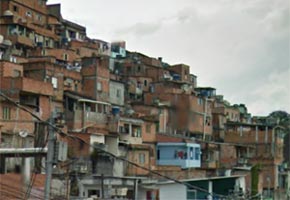

Research analyzes the radical social and political transformation of São Paulo’s outskirts over the last few decades
Research analyzes the radical social and political transformation of São Paulo’s outskirts over the last few decades
Research analyzes the radical social and political transformation of São Paulo’s outskirts over the last few decades

Research analyzes the radical social and political transformation of São Paulo’s outskirts over the last few decades
By Fábio de Castro
Agência FAPESP – The social and political dynamics of São Paulo’s peripheral neighborhoods has witnessed a complete transformation in the last few decades and the axis of urban conflict was dislocated, with the ascension of criminality and the coexistence of different “laws” that regulate social life.
This is one of the conclusions of the book Frontiers of tension: politics and violence on the peripheries of São Paulo, (Fronteiras de tensão: política e violência nas periferias de São Paulo), by Gabriel de Santis Feltran, professor at the Universidade Federal de São Carlos’ (UFSCar) Sociology Department and researcher at CEM, the Center for Metropolitan Studies. CEM is a FAPESP-funded Center for Research, Innovation and Dissemination (CEPID), which is housed within the Brazilian Analysis and Planning Center (Cebrap), and is also National Science and Technology Institute (INCT).
The book published through a partnership between CEM and Editora Unesp – synthesizes the results of Feltran’s doctoral thesis, defended in 2008 at Universidade Estadual de Campinas (Unicamp). The study won the 2009 Best Doctoral Thesis award in the National Post-Graduate and Social Sciences Research Association’s annual competition.
The study was rooted in extensive ethnographic research conducted in the São Paulo Sapopemba neighborhood, beginning in 2005. During prolonged contact with residents of the region, Feltran produced hundreds of pages of field notes in the form of a diary and full transcriptions of more than 40 detailed interviews with adolescents and their families, in addition to the associations that serve them and public managers.
The researcher also utilized official and informal documentation obtained from families, different neighborhood associations, social and political programs, in addition to innumerous journalistic reports on the city’s peripheries.
According to Feltran, in the more than three years from defense of his thesis to publication of the book, he conducted more field research in Sapopemba for his post-doctorate at CEM, which was funded in part through FAPESP. The work incorporates the results of interlocution with several researchers in the area.
“The book interprets the line of radical transformations to which the city’s peripheries have been submitted in the last four decades. In analyzing the path of the tensions in the last few decades, the book argues that the statute of the social and political conflict generated by the urban peripheries was dislocated,” he told Agência FAPESP.
According to him, in 1970, for example, the territories studied were colonized by migrant families and Catholics that occupied uninhabited lands without urban infrastructure and that were seeking upward mobility for their nuclear family unit, anchored in stable work for the male members and efforts to guarantee professional education for their children.
“The scenario of that time was low employment, economic growth, political repression and the promise of social integration for the work,” he affirms.
“Forty years later, the city’s peripheries are consolidated and its families are not as extensive, neither migrants, nor as Catholic,” he said. After grave crises, the economy and employment have only recovered in the last few years, while the dictatorship was substituted for democracy – without residents of the periphery feeling “integrated” – and women have definitively entered the job market, transforming family dynamics.
“Pentecostalism, the world of crime and social policies have expanded enormously throughout these territories at the same time. The individualization of the projects means upward mobility through work coexists with an emphasis on ascension via consumption. In short, the urban, social and political world in which a 17 year old young man on the periphery grows up today – meaning he was born in the 1990s - has nothing to do with the world his grandparents founded when passing through the 1970s,” he noted.
According to him, the peripheries that were seen as the residential areas of the working classes recently began to be viewed as the “land of bandits.” “If before, people were betting on integration of this mass of workers, now one hopes, above all, to contain them,” he says.
Republish
The Agency FAPESP licenses news via Creative Commons (CC-BY-NC-ND) so that they can be republished free of charge and in a simple way by other digital or printed vehicles. Agência FAPESP must be credited as the source of the content being republished and the name of the reporter (if any) must be attributed. Using the HMTL button below allows compliance with these rules, detailed in Digital Republishing Policy FAPESP.





